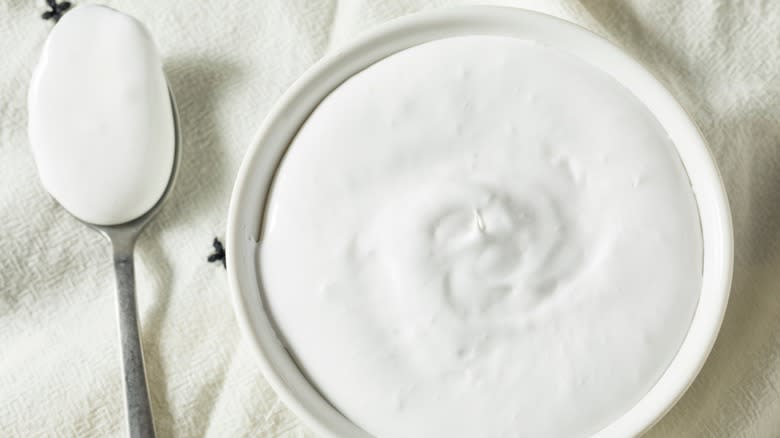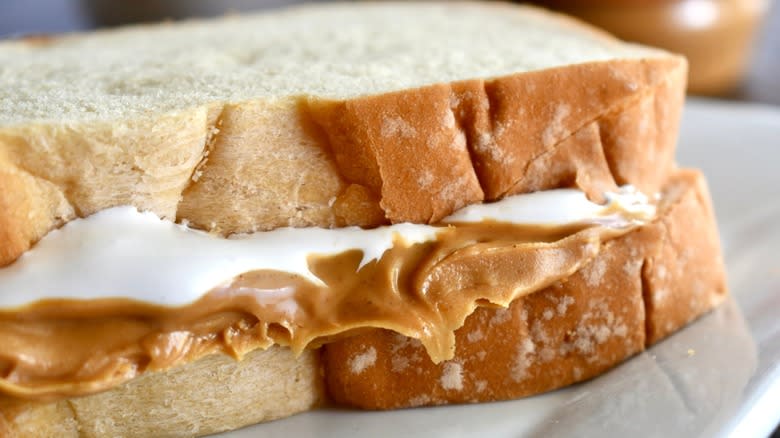How Long Does Homemade Marshmallow Fluff Last?

Marshmallow fluff is a sweet, spreadable treat as rich in nostalgia as it is in delectable flavor. There are so many creative ways to use marshmallow fluff, too - a fluffernutter sandwich is the obvious go-to for good reason, considering how effortless and tasty it is, but fluff also works incredibly well with everything from garnishing dessert cocktails to enhancing brownie and fudge recipes. With so many uses, it's great to always have some fluff in the pantry, and perhaps the best news of all is how easy it is to make your own.
No supermarket runs for store-bought fluff are necessary if you have just two ingredients. You can simply melt marshmallows with corn syrup to create homemade fluff. There's an alternative method, also pretty low-effort, calling for water, granulated sugar, egg whites, cream of tartar, vanilla extract, and corn syrup. Once you've chosen your technique and made your fluff, the only question remaining is: How long will it actually last?
Homemade marshmallow fluff will last for two to six weeks, depending, of course, on proper storage. Keep your fluff in a sealed, airtight container, at a cool-to-room temperature -- meaning your pantry is likely just fine, as long as it is dry. Moisture leads to bacterial growth on your food, which means spoilage. However, fluff can also get too dry, which is likelier if you refrigerate it. If that happens, a few seconds in the microwave will revive it, but dry, room-temperature conditions really are best.
Read more: What Happens If You Accidentally Eat Mold?
Whether To Freeze Marshmallow Fluff And How To Spot Spoilage

Cooler or room temperatures are best and refrigeration won't ruin your fluff but isn't ideal -- so, how about freezing homemade marshmallow fluff to prolong its shelf life? Unfortunately, the freezer is a no-go, because fluff is all about its texture, and freezing it will really change that. You can microwave fluff to bring back some spreadable gooeyness post-refrigeration, but post-freeze, that softness is too far gone.
Around the two-week mark with your airtight container-stored fluff, you may want to start keeping an eye out for any signs of spoilage. Fluff's bright white will start to yellow as it begins its descent from freshness. Its texture gets increasingly sticky and stiff, too -- yes, fluff is naturally a little sticky thanks to those marshmallows, but it shouldn't be so sticky you can't really stir and spread it. Finally, in more advanced stages of spoilage, fluff can grow mold and develop a sour smell and taste.
Of course, the best way to keep your homemade marshmallow fluff from going bad is to use and enjoy it, especially considering how versatile this sweet treat is. Cook with marshmallow fluff to make salad dressings and cake frostings. Add fluff to your cold brew. Dip your ice cream cones in marshmallow fluff. When it comes to this dreamy, cloud-like spread, the sky really is the limit.
Read the original article on Tasting Table.

 Yahoo Lifestyle
Yahoo Lifestyle 
